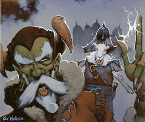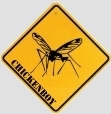ORIGINAL: heibernt
Hi there. As a new player the pilot training scheme seems quite hard to master in the beginning. Especially since you dont see the end result before atleast one year of the war has passed.
So can anyone take the time to give me a short intro to pilot training, especially for the allies?
For instance;
Fighter pilots, should they train sweep, or escort?
At what range does bomber train NavB, LNavB? And TB, when do they train ther different skills, do they need access to torpedos to train NavalT, and at what altitude?
How intense should the training be? And what is an aceptabel lvl of fatuige?
How many pilots per sqaudron, and how many planes?
Is there any point in sending experienced pilots to TRACOM as an allied player?
How efficent is training compared to flying low risk combat missions (like asw out of PH), and what if the combat mission dosent meet any opposition (for instance search missions that cant find any ships; do they still train there skills?
How do leaders affect training?
And im sure theres alot of questions im simply too ignorant to understand the imortance of yet

I am sure this has been discussed before, but all the treads i could find were so old i dont dare to trust them without confirmation that there still correct.. In that case, could someone point me to the good ones?
Thx
Welcome to the game.[;)]
Others will chime in I'm sure, but I will list some things I do. They may not all be "correct", or optimal. Sometimes I misunderstand rules or how code works. I can emphasize that pilot training is a big part of the game if you let it be, but if you're playing the AI it's possible to do very well and win without paying it any attention. Mostly, as in all areas of the game, you should experiment. A lot of the fun in trying to master AE is in pushing into the corners of the game and seeing what happens. Playing the AI you can do this in private. In three complete grand campaigns my PC never once laughed at me. [:)]
Referencing your questions above:
1) I train fighter pilots on about a 90/10 ratio escort/sweep, at least in 1942. Escort includes the CAP mission, which will be a primary role for you, especially as Allies early. Later on to some extent I train sweep by aircraft model. If I know I will use that model for sweeping I train a unit which flies that model in sweeping. Bottom line for fighter pilots you should focus most on the Air and Defense skill column numbers, and secondarily on Experience. Either Sweep or Escort will pump these up, just at slightly different rates perhaps.
2) You don't need torpedoes to train LowNav as far as I know. Train below 5000 feet. You can train torpedo pilots in non-TB models, for example in patrol planes. This can help you early when torpedo bombers are precious. I train all DBs at 15,000 ft. I train all ground bombing and airbase bombing at 10,000 feet if it's a level bomber model. Strafing trains at 100 ft. Search trains at 6000. Recon at 15,000. ASW at 2000. Here I am talking about dedicated training groups, mostly in CONUS. If a frontline unit has a percentage assigned to training I usually don't exceed 10%, and the altitude will be, of course, whatever mission altitude is set to.
Range. An old trick used by most players now is to set training to 100% and Range to 0. Then monitor fatigue. You will get very good skill upgrades this way and minimize fatigue to pilots as well as airframes. IOW, the training stays in a 40 mile hex; it doesn't mean it's on the ground. In the game range flown is a primary driver of fatigue. Low level training, especially 1000 feet or lower, can build fatigue quickly, so watch it. You can sort by fatigue in the reports very quickly. Just establish a cut-off for yourself and when you hit it rest the pilots.
3) My fatigue limit unless a base is in extremis is about 20ish. If you use the Rest percentage you should be able to manage this on the fly without having to ground whole squadrons to sleep.
4) Pilots per squadron: as Allies every single slot should be full every single day if possible. You will never run out of pilots. Pilots not flying still gain stats slowly. In my current game I have units in combat with three working planes, but the unit has 25 pilots. This also keeps fatigue under control.
How many planes is a complex question which is controlled by many factors, mostly the size of your pools. It's far beyond the scope of a post on training. Simply said, fight where you must first, train where you can. Very often you can use obsolete models to train in CONUS or the HI. They don't need shiny new planes to learn on.
5) TRACOM for the Allies is personal preference. Many players use it as a stash for uber-pilots to be sourced for select units. Others don't use it at all. Japanese players can benefit from its role in speeding up the training pipeline. Japanese players CAN run out of pilots in the late war.
6) Flying real missions is the best training IMO. Others might disagree. No one knows exactly what the algorithms look like, and whether skill increases are strictly linear or not. Flying a peaceful mission will increase skills, but combat missions increase them faster. I'm not aware if the Search mission increases faster if something is found. I doubt it myself. Fighter and bomber pilots definitely benefit from combat.
7) Leaders affect training a lot. I use a rule of thumb to select a training leader first for AIR skill, and second for LEADERSHIP. Leadership acts "under the hood" in ways not ever fully disclosed by the devs, but it helps in all areas the leader affects. But primary is the warfare skill, here AIR. (Similarly, LAND for LCUs and NAVAL for ship drivers.) Many players select an air unit leader who is not going to fly, in order to not lose him and the PPs spent if he is shot down., I personally do not do this. For one it's fiddly, and second I think squadron leaders should, and did, lead their pilots into combat, not sit back at the base in the O-club. That's me though.
Hope this helps you wrap your arms around the thing a bit.







